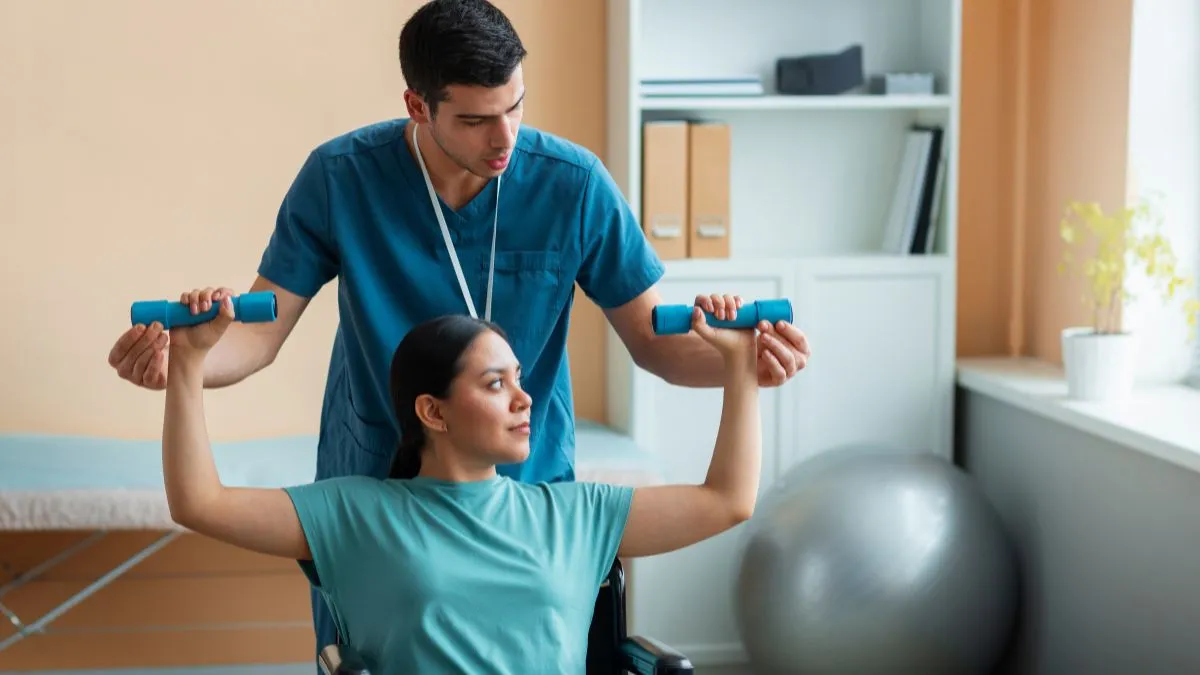
Every person, at any age, holds dreams. For our seniors, these dreams are often simple yet deeply profound: to play with their grandchildren, to tend their garden, to travel, or simply to live independently without being a burden on their family. Chronic conditions like arthritis, however, can cast a long shadow, making these dreams seem increasingly distant. The pain, stiffness, and reduced mobility can lead to a cycle of inactivity, social isolation, and a loss of confidence. On this World Arthritis Day, with its focus on 'Achieving Your Dreams', let’s recognise that these aspirations are not only valid but entirely achievable.
Table of Content:-
According to physiotherapist Pamit Sharma, Manager– Physiotherapy and Rehabilitation, Antara Care Homes, “The key lies in a specialised and clinically-backed approach to care. Senior care is different from ordinary care; its aim is not merely to treat ailments or manage chronic conditions. Senior-specific care means to holistically create the conditions for dignified and healthy ageing. Geriatric physiotherapy is a cornerstone of making this a reality for India's growing senior population.”
Why Geriatric Physiotherapy is Different: It’s About the Whole Body
Standard physiotherapy often focuses on rehabilitating a specific injury to restore peak performance. For a senior, the goal is different. It’s about restoring and maintaining both function as well as independence in the face of natural physiological changes like sarcopenia (muscle loss), reduced bone density, and the joint degeneration synonymous with arthritis. This is not a one-size-fits-all approach.
“Geriatric physiotherapy is fundamentally holistic. It acknowledges that an older adult is likely managing multiple health conditions, or comorbidities, such as diabetes, hypertension, heart disease. A geriatric-trained physiotherapist must see beyond a painful knee; they must recognise that knee pain can limit mobility, which in turn can worsen blood sugar control and increase fall risk. Therefore, the rehabilitation plan is intricately woven to address this complex web,” explains Mr Sharma.
Also Read: Shift From Passive To Active Physiotherapy: Expert Lists Benefits And Challenges
A Senior-Focused Approach offers Quality Care
For a senior with arthritis and diabetes, gentle, low-impact exercises do more than just ease joint pain; they actively help regulate blood sugar levels, a PMC study shows. For someone with arthritis and hypertension, a carefully monitored program can help manage blood pressure while improving cardiovascular health. This is the essence of comorbidity management through physiotherapy, it is a single, tailored intervention that can deliver multiple therapeutic benefits.
- Such an approach includes pain management, using modalities like heat therapy or Transcutaneous Electrical Nerve Stimulation (TENS) to control arthritic pain, enabling safe participation in exercises.
- This is supplemented by functional training, which focuses on daily life activities, such as rising from a chair, climbing stairs, and dressing.
- This helps ensure that physiotherapy translates directly into regained independence.
- Another key tenet of geriatric physiotherapy is fall prevention, which is critical for seniors.
- This involves specialised balance training, also called vestibular rehabilitation, addressing instability and building the confidence to move without fear of injury.
Also Read: Joint Pain in Your 20s and 30s? It Could Be Early Inflammatory Arthritis
Why Geriatric-Trained Physiotherapists are Essential for India's Ageing Population
As per Mr Sharma, “India is witnessing a demographic shift, with a rapidly growing population of seniors. For the first time in the nation's history, by 2050, there will be more seniors than children in the country. This makes the need for specialised geriatric care more urgent than ever. A geriatric-trained physiotherapist is not just a technician of exercises; they can be an empathetic partner in ageing. They understand the pharmacology of common geriatric medications, the psychology of ageing, including the fear of falling and the grief of losing independence, and the nuances of designing a program that is both effective and safe for fragile bones and joints.”
Employing specialised equipment and techniques can help optimise physiotherapy for seniors and reduce the risk of injuries during recovery. For example, aquatic therapy allows for low-impact strengthening and improved mobility. Resistance band exercises, balance boards, and BOSU balls enhance muscle tone and proprioception. These interventions are vital in a country where the dream for most families is to see their elders age gracefully, healthily, and at home for as long as possible.
Final Word
Ultimately, geriatric physiotherapy’s greatest success is measured not just in improved range of motion, but in restored hope. By educating patients, involving them in goal-setting, and celebrating every small victory, be it taking walks outside or tying their own shoelaces, physiotherapists can foster empowerment beyond treatment. With a holistic, empathetic, and expertly delivered geriatric physiotherapy program, an active, independent, and fulfilling life is not just a dream for our seniors. It is a very achievable goal.
Also watch this video
FAQ
What is Geriatric Physiotherapy?
Geriatric Physiotherapy is a specialised form of physiotherapy that is given to older adults to improve their physical strength and mobility.What are Geriatric Physiotherapy conditions?
This is provided to seniors dealing with balance disorder, arthritis, chronic pain, osteoporosis, neurological conditions, mobility issues, to name a few.What are the 5 M's of geriatric patients?
The 5 M's of geriatrics are Mobility, Mind, Multicomplexity, Medications and Matters Most.
How we keep this article up to date:
We work with experts and keep a close eye on the latest in health and wellness. Whenever there is a new research or helpful information, we update our articles with accurate and useful advice.
Current Version
Oct 12, 2025 18:06 IST
Published By : Chanchal Sengar